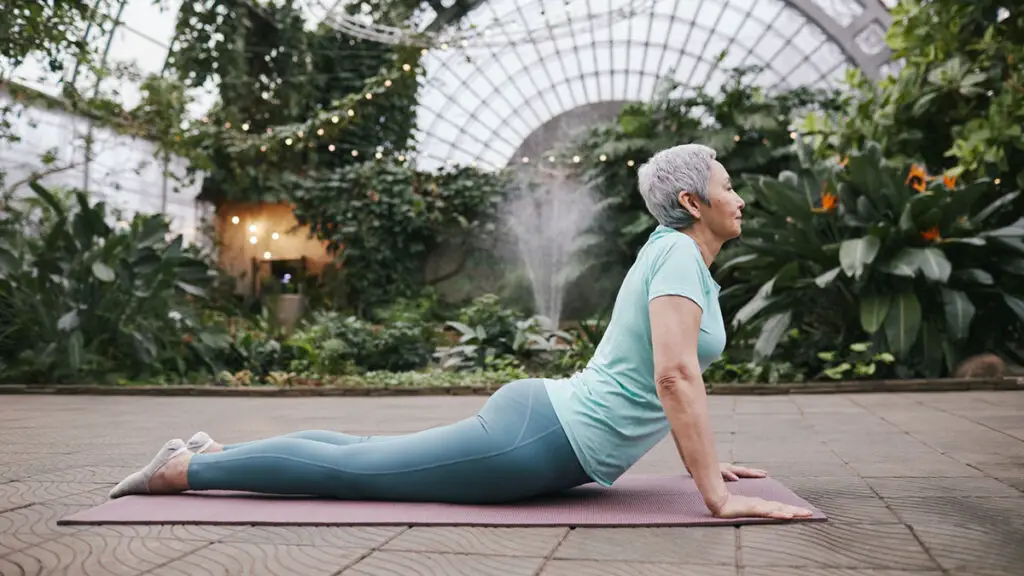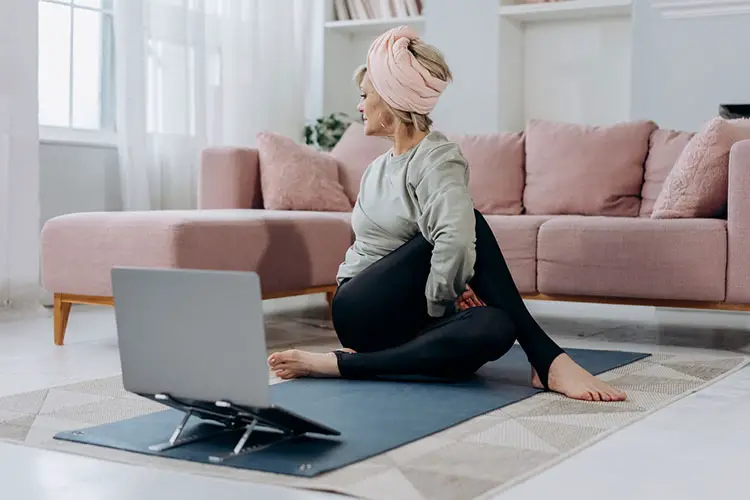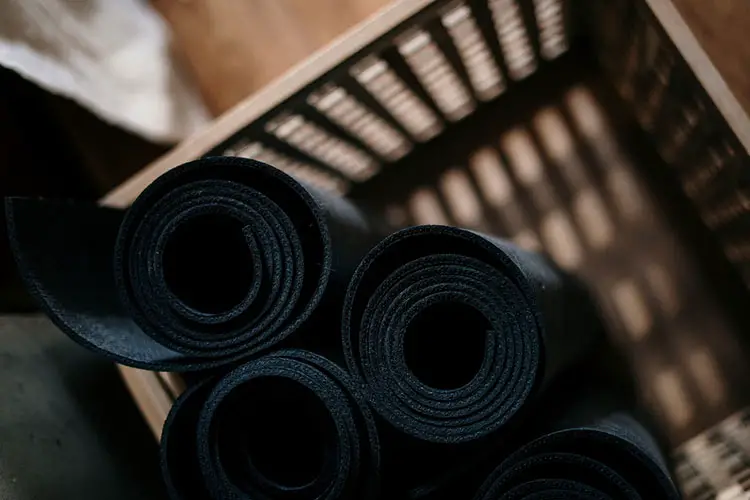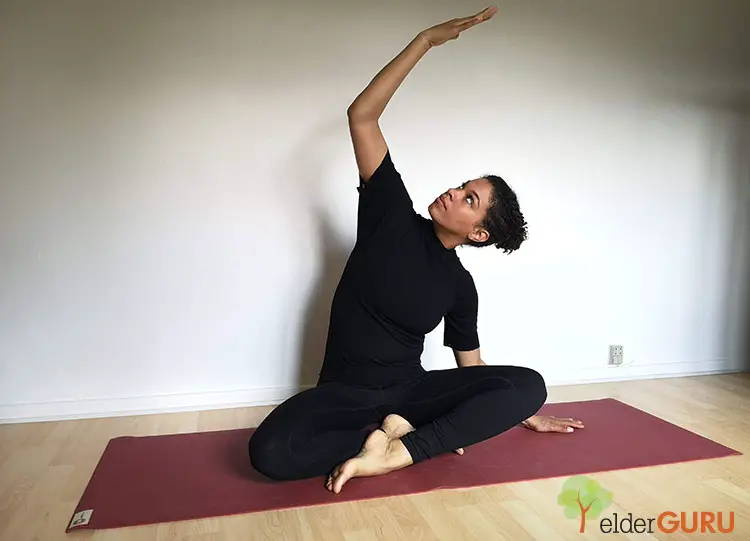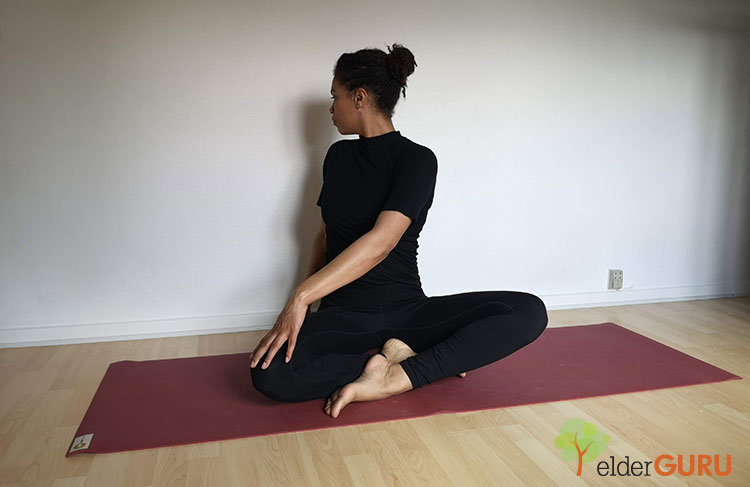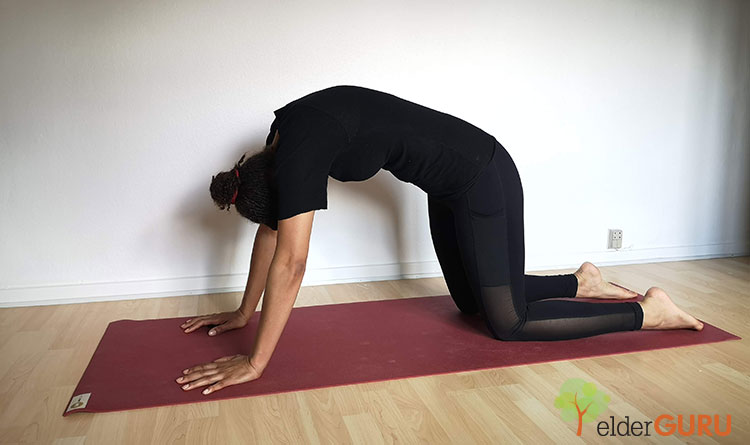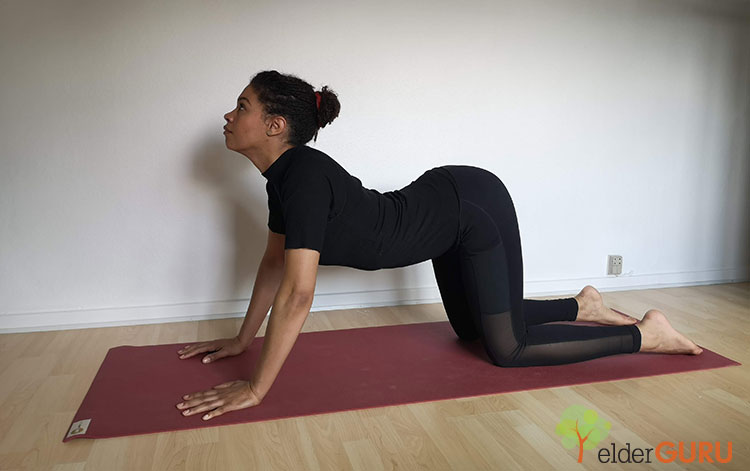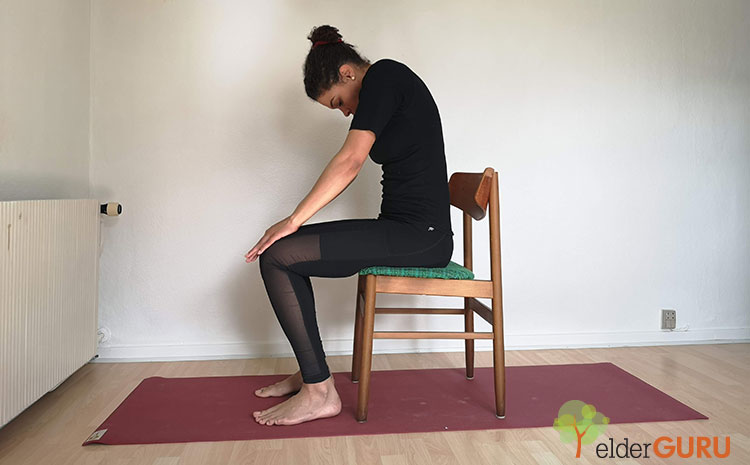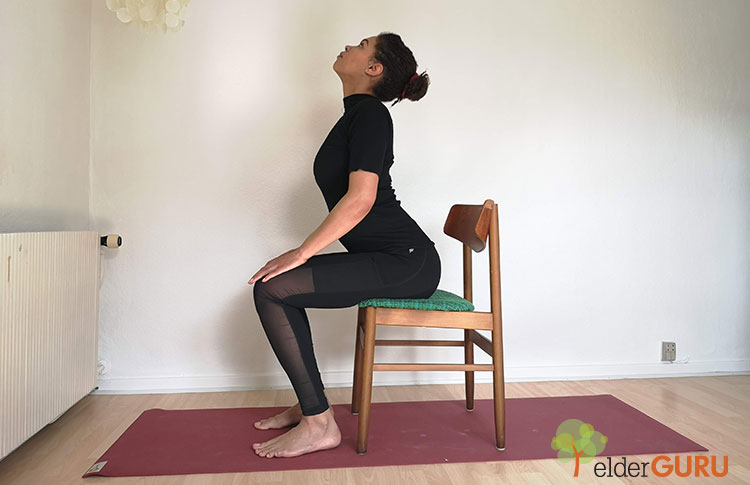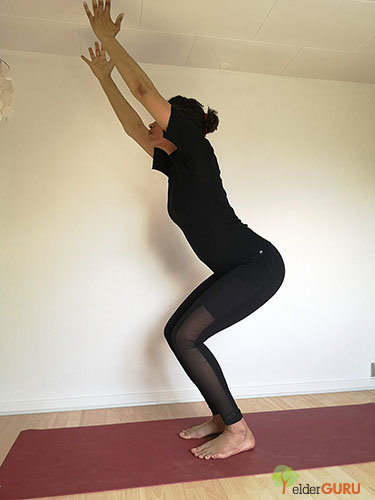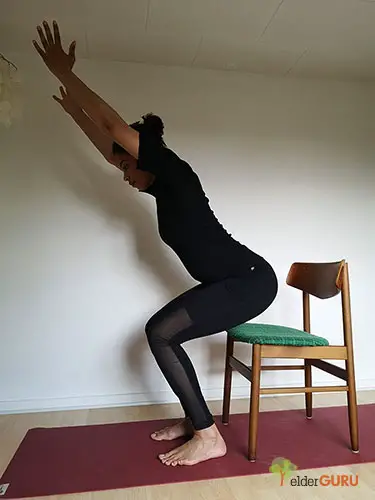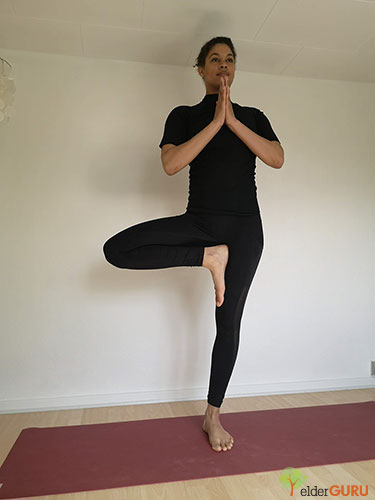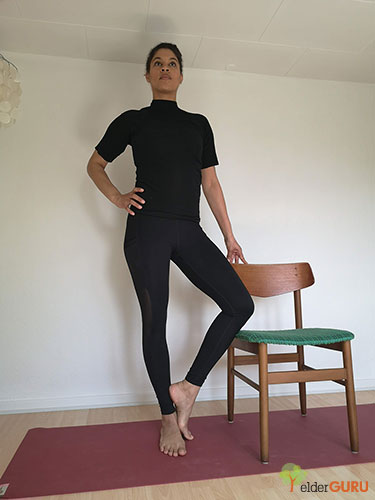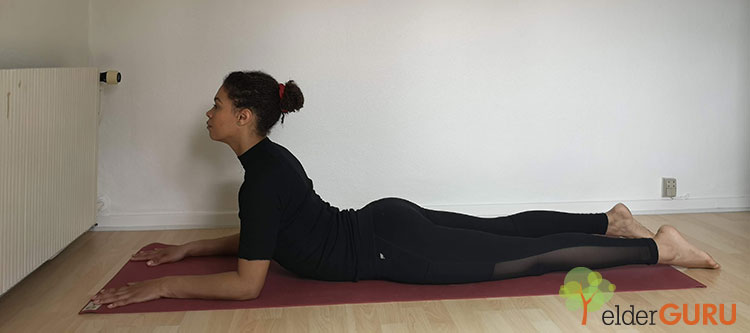More and more people in their later years are discovering the mental, physical, and emotional benefits of yoga for seniors.
Maybe you know someone who has started doing yoga, and you have become interested in starting yoga yourself. Maybe you are living with pain or ailments, and you are interested in if and how yoga can help you. In this article, you can read all about the benefits of yoga, how to start a yoga practice, which classes might be for you and you’ll get recommendations on resources to help you get started.
A lot of people feel intimidated by the postures shown when you google yoga and think that yoga is only for the already fit and flexible. Nothing could be further from the truth! All you have to do is make sure you are choosing yoga poses that suit you. If you are uncertain in any way about your physical abilities to start yoga, first speak with your doctor or healthcare professional. They will be able to guide you and also make sure that you are aware of any specific movements or breathing techniques that you should not be doing.
Yoga is an easy practice to get into and there are classes and routines for all body types, fitness, and experience levels. You are never too old to start yoga!
6 Benefits of Yoga for Seniors
My back has never felt better.
I can walk the stairs without losing my breath.
My wife would never let me stop doing yoga, she says I’m just happier and way less stressed.
These are just some of the things I’ve heard from my students. As a yoga teacher, teaching several senior classes, I have experienced the benefits of yoga for seniors through my students. But you don’t have to trust my word more and more research is showing the same results.
One thing I would like to mention right away is that it’s not just the postures, breathing techniques, and meditations. It is the way they are practiced. A good yoga instructor will tell you to listen to your body and to only go as far as what feels right for you in the moment. Do not compare yourself to others. Do not compare your day to yesterday. Just be present in the moment in your body. This is one of the real benefits of yoga, learning to be in your own body, becoming aware of your limitations and possibilities, and finding the balance between effort and ease.
Let’s take a look at six of the notable benefits of yoga for seniors. Yoga…
1) Improves Balance and Flexibility
Most of the time we do not think about how much our balance and flexibility affect our everyday life. At least until we lose it. Putting on socks or shoes requires a great amount of flexibility, just being able to reach your feet, but also keeping the balance while possibly standing on one leg. Washing your hair requires the shoulders to be flexible enough that your hands can reach, and it requires a great amount of strength to hold the hands overhead. I could continue through many of the everyday chores. This is why programs like Matter of Balance, designed specifically for older adults, matters so much. The good news is that yoga can help.
Yoga is known for improving flexibility. Several studies have shown this; see this study which found that yoga improves flexibility among seniors. In yoga, you move slowly at the edges of your range of motion. Often holding poses for several breaths, while breathing slowly. This allows the connective tissue and muscles to relax and stretch, increasing your range of motion and flexibility.
Also, the combination of the slow movement, balancing postures, and lots of core work, improves your balance. Falls are the most common cause of injury among seniors, improving your balance and mobility is key in keeping safe. In this small study, they found that regular yoga practice did decrease falls among seniors.
2) Strengthens the Whole Body
Yoga strengthens your muscles and there’s promising research showing that it also strengthens your bones. As you become older your bone mass and density will decrease, this is natural and foreseeable. For some the creation of new bone cannot keep up with the loss of old bone, they are diagnosed with osteoporosis with an increased risk of bone fractures, especially in the spine.
In yoga, you move your spine in all 6 directions – back, forth, side to side and rotate both left and right. When done properly this will increase the health of your spine. Note: If have osteoporosis, be careful with rotations and forward folds. We will look into the postures and how they are done safely in just a moment.
3) Alleviates Back Pain
There are many causes to back pain: disc injuries, SI joint inflammation, ligamentous strain or arthritis are just some of them. Yoga for seniors can help aging backs in many ways. First of all by strengthening the body and improving mobility. But also by improving posture. For those with chronic pain, yoga can help by learning the body to breathe and relax.
For a lot of people, the actual cause of their back pain is never identified and the majority are just classified as having nonspecific chronic low back pain. This is frustrating! The good news is that research shows that yoga can help alleviate nonspecific chronic low back pain.
4) Deepens Your Breath
In yoga you practice Pranayama. Prana means energy, and Yama means control. So how do you control energy? Through your breath. More and more research is finding the link between energy and breath. Most of our bodies’ systems are automated and non-controllable by us; think circulatory, lymph, or immune systems. But the respiratory system is one of the systems we can control.
When we control our breath, we directly affect our nervous system. By affecting the nervous system we can affect our mood, energy, and stress level. The physical practice of yoga can also help open our chest, making more room for the breath, which allows us to deepen the breath. Generally, the deeper the breath, the calmer our minds and bodies will feel, the better we will sleep, and the easier it will be to be physically active.
The older you get, the bigger the risk is of having decreased lung capacity and pulmonary disease. A study showed that among aged women, yoga can help improve pulmonary function.
5) Brings Better Sleep
As just mentioned, breath has a major role to play in the quality of our sleep. If you have trouble breathing, you know this. The breathing exercises of yoga can help you improve the quality of your breath.
Generally, the older we get, the harder it becomes for us to sleep well. Sleep disturbance and insomnia are most prevalent in the 60+ part of the population. Luckily, yoga can be a tool for getting better sleep. Daily exercise is an important part of getting quality sleep. Meditation and relaxation practices can also have a great impact on sleep. When we practice relaxation techniques we are training our relaxation response, and as with everything the more we practice the better we get. Learning to activate the relaxation response can make it easier to fall asleep at nighttime and fall asleep again if you awake at night.
6) Strengthens the Mind
Yoga has shown benefits in stress reduction, regulation of emotions, improving mood, general wellbeing, and cognitive functioning. Also, it has proven its utility in depressive disorder, anxiety states, posttraumatic stress disorders, and substance use disorders. Through the practice of yoga, we become more present, more focused, more self-aware. We learn to regulate our thoughts and find peace and ease in the present moment. The mental health benefits of yoga are many and after doing yoga for a very short period, you might find yourself feeling happier and more balanced.
7 Best Types of Yoga for Aging Bodies
Which type of yoga might be for you, depends on a lot of things. First, it is important to know the different practices and styles so you can choose the right one for you. Second, your expectations, fitness, experience, and a lot of other factors may play a role in finding the yoga class or style for you.
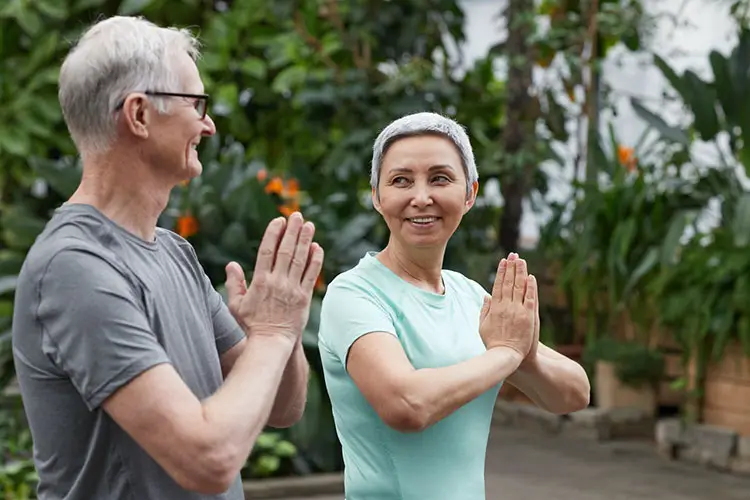
Depending on the instructor, most of these yoga classes will likely include physical practice doing both stretching and strength-building exercises, breathing exercises, and relaxation techniques, maybe including meditating.
1) Chair Yoga
If you are uncomfortable moving up and down from the floor, chair yoga is a great practice. In fact, this may be the best place to start with yoga for seniors. Most chair yoga instructors also know quite a bit about modifications for pain or different illnesses. If you have pulmonary disease, cardiovascular disease, experience dizziness, or in any other way need to be mindful of your breath and heart rate, this can be a great practice for you. Also, if you have a limited range of motion you will experience this style as a great way to work with flexibility and mobility.
2) Gentle Yoga
“Gentle yoga” is a phrase used very broadly. Gentle yoga can mean anything from just lying and sitting postures, to include standing postures, to slow flows, where you move from one pose to another with your breath – and anything in between. I would very much recommend talking with the instructor before starting a gentle yoga class. If you have specific challenges or your doctor has advised against certain practices, I would ask if the instructor can accommodate or modify them to keep you safe.
3) Hatha Yoga
Hatha yoga is actually all physical yoga practices. With this being said, when used to specify a class or style Hatha yoga is typically a slow-paced type of yoga. In a Hatha class, you will be doing both standing, seated, and lying poses. Normally, holding each pose for some time/several breaths (yes in yoga, time is counted in breaths).
The focus will probably be on stretching and strengthening the whole body. It can vary a lot how much props (bolsters, chairs, blankets, blocks, belts, etc.) are used in Hatha classes and it is totally dependent on the instructor whether or not you will be given variations of and modifications for the poses.
4) Iyengar Yoga
B.K.S. Iyengar founded Iyengar yoga which is a methodical style of yoga with a focus on alignment. In Iyengar yoga props (bolsters, chairs, blankets, blocks, belts, etc.) are used. The focus on alignment combined with the use of props makes this a very embracing yoga style. Allowing pretty much everyone to practice yoga safely.
The focus will probably be on stretching and strengthening the whole body. Be aware that Iyengar yoga classes are normally divided into levels: 1 being beginner-friendly, whereas level 3 is for practitioners that are comfortable doing inversions such as headstand.
5) Kundalini Yoga
Kundalini is energy that lies dormant at the base of the spine until it is activated. Kundalini yoga is all about this activation. This type of yoga can be the right choice if you are interested in the spiritual practices of yoga. There have been specific kundalini classes developed for seniors. I would recommend talking with the instructor if you are uncertain about a class, as some of the “not specifically for senior” – classes are rather physically demanding. Expect to chant!
6) Restorative Yoga
Restorative yoga is a very meditative form of yoga. The poses are done lying or sitting on the mat with the use of a lot of props (bolsters, chairs, blankets, blocks, belts, etc.). It’s all about getting as comfy as possible, holding poses for 5-20 minutes.
In Restorative yoga, the focus is not on stretching, but on releasing, and your body should feel totally supported. This can be a great practice to find relaxation or to work very gently with opening your body. If you live with discomfort or pain from your body – this might be the practice for you.
7) Yin Yoga
Yin yoga is also a meditative form of yoga, but in a very different way than Restorative. Poses are mostly done seated or lying using a lot of props. In Yin yoga, you typically stay in the poses for 3-10 minutes working your connective tissues. But here you are stretching! You find your edge and you breathe into the stretch.
With a regular Yin yoga practice, you will be able to gain flexibility and relieve stiffness. Make sure to check in with the teacher before taking a Yin class as it can vary how good the teacher is at accommodating the special needs of seniors.
Other Yoga Styles
You may also have seen styles such as Ashtanga or Vinyasa. These styles are very vigorous and often include postures that require a lot of strength and flexibility. You move from pose to pose on breaths. Moving rather fast, making it harder to stay within proper form unless you are quite experienced. These styles can be a real cardio exercise. If you feel like this might be more of your style, you should try it. But these are not styles I would generally recommend in yoga for seniors.
Also, you might have seen Bikram yoga or Hot yoga. Bikram is a yoga style with 26 predefined postures done in a heated room. The postures in Bikram require a lot of strength and flexibility. The heating of the room in both Bikram and Hot yoga might lead to overstretching (be very careful if you have osteoporosis or arthritis) and is not suitable for anyone with diabetes or cardiovascular problems.
Getting Started with Yoga in Old Age
You can start your yoga for seniors practice at home or by attending classes. Both can work out really well. Look at the list above and find a style that you think suits you. If you’re not sure, try some different styles. Of course, if you have any ailments or illnesses talk with your healthcare professional first.
If you want to attend classes I recommend talking with the studio or teacher first. Tell them what it is you expect and check to see if there’s a match. Maybe ask if you can try out a class, many studios offer this for new students.
You can start your at-home practice in many ways. If yoga is new to you I would recommend maybe finding a teacher that teaches online, to give you a basic understanding of the poses. The nice thing about online teaching is that you can get feedback on your form in the different poses. You can also find many great classes on YouTube. Here is one such video to get you started:
If you chose a style before, you can search by style on YouTube and find a teacher you like. If you would rather do the poses yourself, this is also an option. Be mindful, stay within your comfort zone, and practice with patience and respect for your body.
Products You Need to Get Started
All you need to get started is comfortable clothes (preferably fitted), especially if you are attending a class where you are moving up and down a lot. Everything else is just adding to the comfort and luxury of the experience.
If you choose to attend classes at a studio, most studios will provide you with a mat and other props. If you choose to practice at home I would recommend getting a yoga mat. Make sure the mat you are buying is a yoga mat. It should be ⅛ – ¼ inch thick. Gaiam yoga mats are one of the more well-known brands in yoga mats.
The thicker the mat the more support for your joints, but the thicker the mat the trickier it is to balance. If you are doing balancing postures stay close to a wall or maybe use the back of a chair. Make sure you have a chair without armrests if you are doing Chair yoga.
There are a lot of props that might help you and that will make your experience more pleasant:
- Yoga blocks can help to lengthen your arms making the floor come closer to you. They can also be used to lie, sit, or stand on.
- Bolsters offer great support and if you plan on doing Yin or Restorative yoga a bolster might be needed for several of the poses. Gaiam bolsters are also of decent quality.
- Yoga belts can be used for a variety of poses and are quite often used for leg stretches.
- Blankets that are firm for sitting or lying on.
6 Best Beginner Yoga Stretches for Seniors
There are many different stretches in yoga for seniors, but here are some basic ones to get you started, stretches that can be easily performed in the comfort of your own home.
1) Seated Side Stretch
The seated side stretch can be done seated on the floor or a chair. You can sit on blankets, a block, or a bolster if that feels more comfortable. The stretch will open up the sides of the body, stretch the obliques, ribs, shoulders, and arms.
Instructions: Sit in a comfortable seat. Place your left hand on the floor/chair beside you. Bend your left elbow slightly. Reach your right-hand overhead palm facing down. Stretch the right side of your body. Hold for 3-10 breaths. Switch sides.
2) Seated Twist
The seated twist can be done seated on the floor or a chair. You can sit on blankets, a block, or a bolster if this feels more comfortable. The stretch will rotate the spine, stretch the neck, shoulders, and back, and it will stimulate digestion.
Instructions: Sit in a comfortable seat. Inhale, find length from your tailbone to the top of your head. Exhale, twist to the right. You can place your left hand on your right thigh and your right hand on the floor/chair beside you. Or you can cactus your arms. Hold for 3-10 breaths. Switch sides.
3) Cat-Cow
These two stretches can be done on all fours or seated in a chair. They stretch the spine, back, and neck. They are also great for engaging core muscles and stimulating organs.
Tabletop Instructions: Begin on your hands and knees in tabletop position, hands under shoulders and knees under hips. On an exhale, press into the hands as if you’re pressing the floor away, round the spine, and look towards your navel. On an inhale, drop the belly, arch the back and look up.
Chair Instructions: Sit in a comfortable seat. Hands on thighs. On an exhale, press into the hands as if you’re pressing your thighs away, round the spine, and look towards your navel. On an inhale, open your chest, arch the back and look up.
4) Chair Pose
Chair pose can be done standing or sitting in a chair. This is a real strengthening pose, strengthening pretty much your entire body.
Standing Instructions: Stand tall. Feet either hip-width apart or together. Bend your knees and sit back as if you were to sit in a chair. Engage your core muscles and lean your upper body back as close to straight as possible. Options for your arms include hands on hips, palms meet in front of your heart, or reach up towards the sky. Hold the pose for 5-10 breaths.
Chair Instructions: Sit tall. Feet hip-width apart. Press down through both feet. Engage your core muscles and lean your upper body back as close to straight as possible. Press as much as you can and imagine that you can lift your bottom from the chair.
5) Tree Pose
Tree pose can be done standing or sitting in a chair. The stretch strengthens thighs, calves, ankles, abdominal muscles, and the spine. It stretches thighs, chest, and shoulders. It also improves your balance, coordination, and hip mobility.
Instructions: Stand/sit tall. You can stand with your back against a wall or use your hand to grab onto the wall/ a chair for balance. Place your right heel on your left ankle/calf/inner thigh depending on what feels right in your body. Press the right heel into the left ankle/calf/inner thigh with the toes pointing down towards the floor. Open your knee out to the side. Rest the hands on your hips for a moment to make sure that the pelvis is in a neutral position. Lengthen the tailbone down toward the floor. From here you can keep your hands on your hips, let palms meet in front of your heart, or reach them towards the sky.
6) Sphinx Pose
Sphinx pose is a great pose for opening the chest, preventing forward head syndrome, and alleviating lower back pain.
Instructions: Lie on your stomach and place your forearms on your mat, palms facing down, elbows under shoulders. Press down through your forearms and hands. Draw your shoulder blades together. Lift from your chest, broaden across your collarbones and engage your abdominal muscles to lift slightly. Keep your neck in line with the rest of your spine. Hold for 5-10 breaths.
Helpful Yoga Books and Videos
If you are nervous about jumping into a yoga for seniors class, or there are no classes nearby, or you just feel more comfortable practicing in your own home, there are books and videos to help you get started.
Recommended Yoga Books
- Yoga for Age 60+: A Guide to a New Journey of Safe Yoga Practice at Home by Meena Vad. Including step-by-step instructions with illustrations. Chapters on postures, breathing, meditation, the yoga of devotion, and specific conditions.
- Yoga for Healthy Aging: A Guide to Lifelong Well-Being by Baxter Bell and Nina Zolotow. Discusses how yoga can address concerns related to strength, flexibility, balance, agility, cardiovascular health, brain health, and stress management, among other issues. Included is a yoga program including poses, breathing practices, meditation, and yoga philosophy.
- The New Yoga for Healthy Aging: Living Longer, Living Stronger and Loving Every Day by Suza Francina. A step-by-step guide with illustrations. Discusses how yoga postures can prevent or lessen ailments such as osteoporosis, hip fractures, chronic pain, arthritis, Alzheimer’s, and Parkinson’s disease.
- Chair Yoga: Sit, Stretch, and Strengthen Your Way to a Happier, Healthier You by Kristin McGee. 100+ yoga poses that can be done in a chair.
- Relax into Yoga for Seniors: A Six-Week Program for Strength, Balance, Flexibility, and Pain Relief by Kimberly Carson and Carol Krucoff
Includes a 6-week program for improved balance, flexibility, and overall well-being. Presents twelve principles of yoga practice for seniors.
Recommended Yoga Videos
If you prefer DVDs:
- Yoga Vitality – Chair Yoga For Seniors, Older Adults, and Absolute Beginners – Made For Healthy Aging, Improved Mobility, Joint Health, Balance, Pain Relief, and Injury Prevention – 4 Levels
- Yoga for Seniors with Jane Adams (2nd edition): Improve Balance, Strength & Flexibility with Gentle Senior Yoga, now with 3 complete practices
- Yoga over 50 DVD – Workout Video with 8 Routines, including routines for Seniors
There are also many great videos on YouTube:
- UW Health has modified yoga poses for limited mobility and chair yoga sequences
- Yoga with Kassandra has many great beginner sequences, Yin yoga and also does chair yoga
- Yoga with Adriene is the most popular yoga teacher on YouTube and she also does chair yoga
Summary
The benefits of yoga for seniors are many. Yoga can help you age gracefully, and manage your everyday chores and life. It can help to maintain balance, flexibility, and mobility, all while keeping the body both muscles and bones strong. Moreover, it increases the overall sense of well-being and can help in preventing or decreasing mental health problems.
In this article, you have been presented with the yoga styles that may suit you as an older adult, and hopefully, you are now sure of a style to try for yourself. Remember, all you really need is comfortable clothes, but a mat, a chair without armrests, blocks, belts, bolsters and blankets all make the experience so much more luxurious, and can make the poses more accessible.
About the Author:
Shasmina is a yoga and meditation teacher. She has a Master’s of Social Sciences in Philosophy and Social Science and is the owner of Mærk Efter, where she guides students in the teachings of yoga both individually and in group classes. Visit her LinkedIn page.

